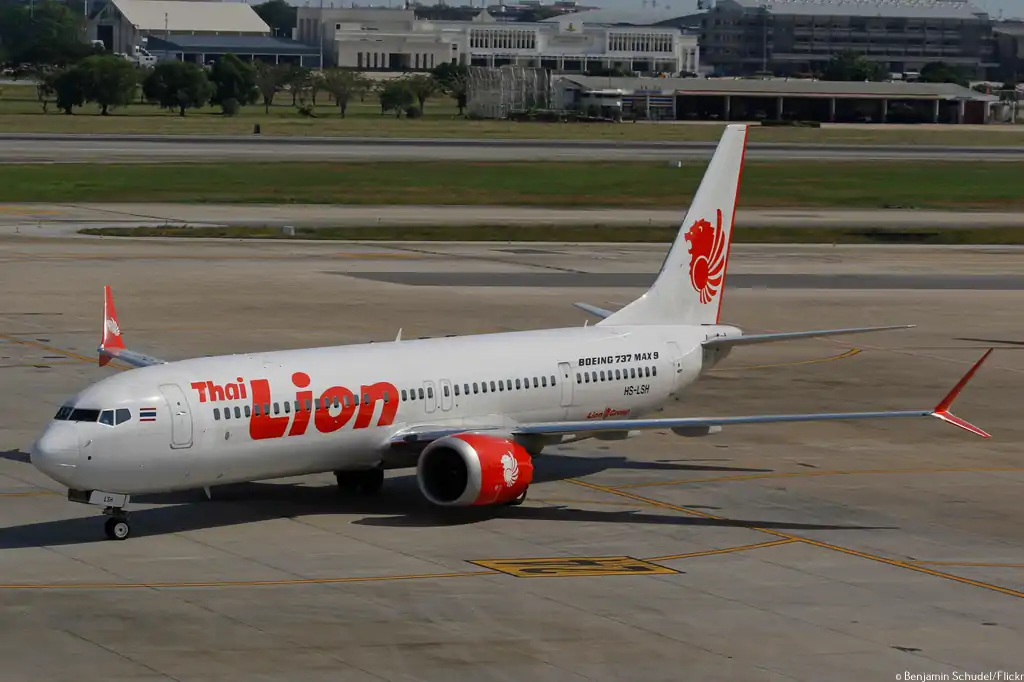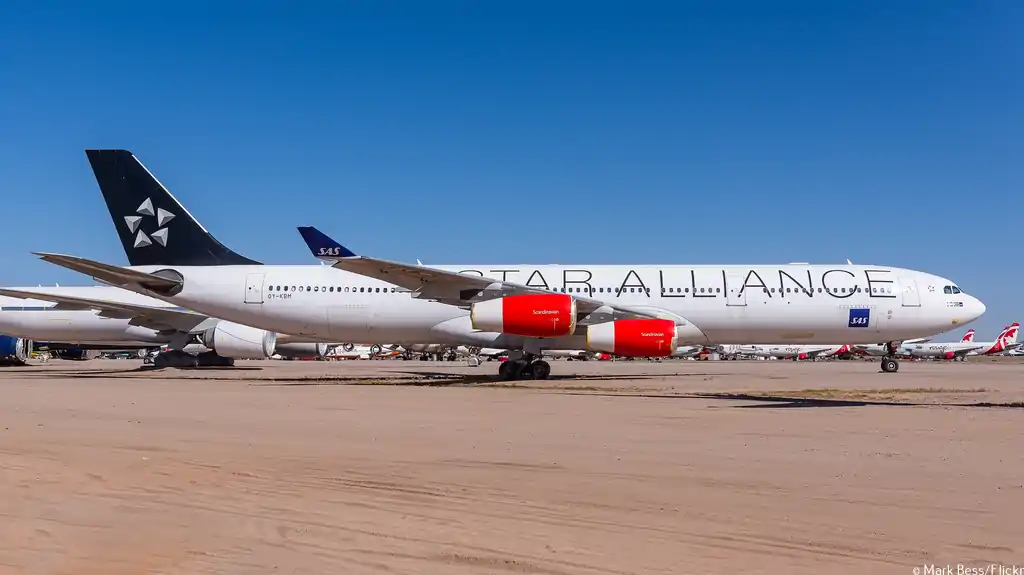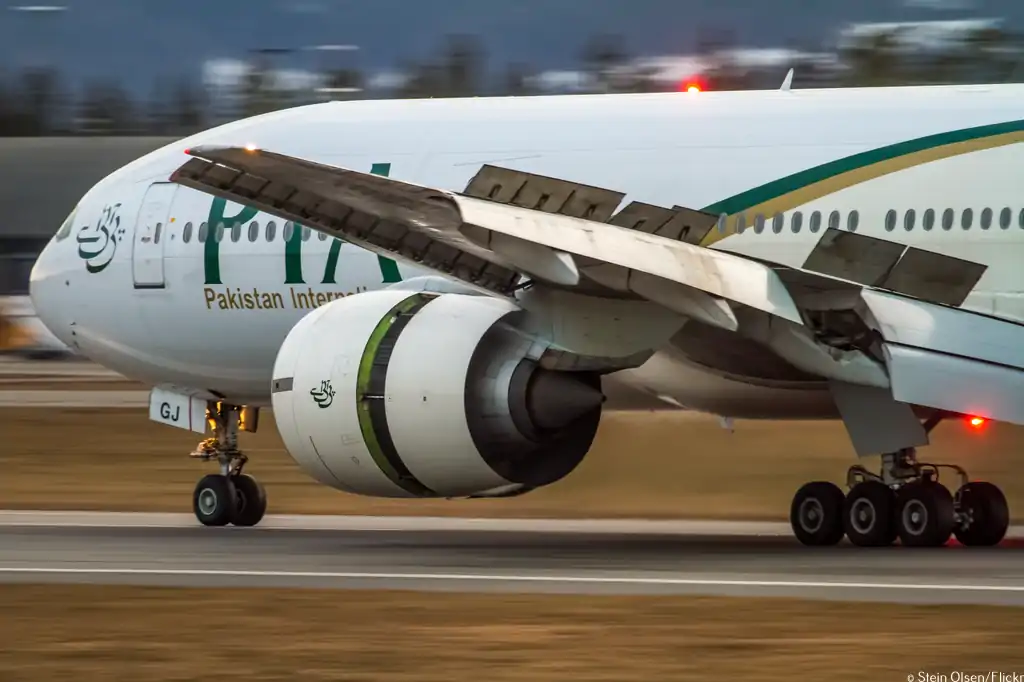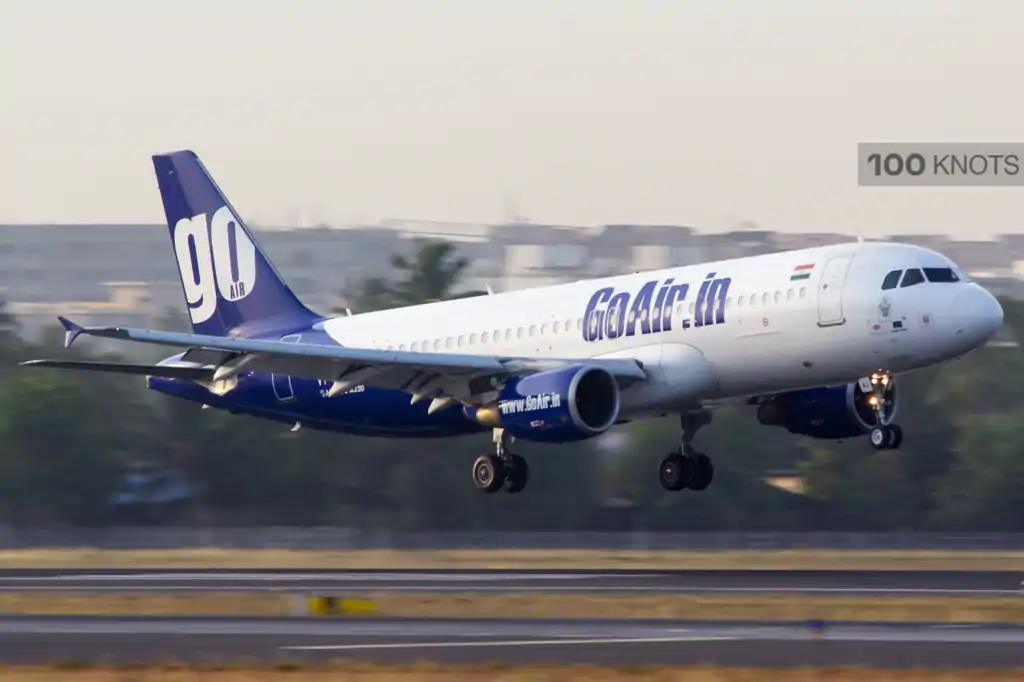Thai Lion Air is commencing passenger flights from Bangkok to Cochin, starting April 4 and has selected Celebi India as ground handling service provider at Cochin International Airport.
Tauseef Khan, CEO of Celebi Ground Handling – India, said, "We are honored to be chosen as the ground handling service provider for Thai Lion Air's operations at Cochin International Airport. This partnership exemplifies Celebi India's commitment to delivering exceptional service and underscores our reputation as a trusted partner for major international airlines. With our expertise and dedication to excellence, we are fully prepared to ensure a seamless and efficient ground handling experience for Thai Lion Air and its passengers."
“At Thai Lion Air, we are committed to providing our passengers with a seamless and superior travel experience from the moment they step into the airport. We are excited to expand our operations to Cochin with Celebi India as our ground handling partner, a collaboration that has already proven to be highly successful in Mumbai and Bangalore. Celebi's commitment to operational excellence and customer satisfaction aligns perfectly with our vision, enabling us to offer enhanced comfort and convenience to our passengers. We look forward to this strengthened partnership paving the way for even more successful operations in India" said Sunny Malhotra – Regional Manager India for Thai Lion Air.
Thai Lion Air's commencement of flights to Cochin represents a significant milestone in the region's aviation landscape, providing enhanced connectivity between India and Thailand. As a preferred ground handler for Thai Lion Air's operations in Mumbai and Bangalore as well, Celebi India continues to strengthen its presence and expand its footprint in the Indian aviation sector, the company said.
Celebi has been present at Cochin International airport since 2018.
Read next
In a significant move within the aviation industry, Scandinavian Airlines System (SAS) has announced its departure from the Star Alliance, a global airline network, effective August 31st. The decision marks the end of an era for SAS, one of the founding members of the Star Alliance, as it embarks on a new journey with SkyTeam. This transition holds implications for travelers, particularly frequent flyers, as SAS navigates its way into a new alliance ecosystem amidst the backdrop of a post-pandemic world.
SAS's Alliance Transition Journey
Amidst advanced negotiations with SkyTeam and its members, SAS is set to bid farewell to the Star Alliance on August 31st. While the airline's membership in SkyTeam is not instantaneous, it has laid out plans to ensure a smooth transition for its EuroBonus members. The move follows SAS's Chapter 11 bankruptcy protection filing during the COVID-19 pandemic, with Air France-KLM stepping in to rescue the struggling carrier.
Continued Benefits for EuroBonus Members
EuroBonus members, SAS's loyalty program participants, will retain their Star Alliance benefits until August 31st. However, come September 1st, these benefits will cease to exist as SAS shifts its focus towards integrating with SkyTeam. Despite the impending changes, eligible EuroBonus members can expect to claim frequent flyer benefits with most SkyTeam carriers starting September 1st, ushering in a new era of travel perks and opportunities.
Assuring a Seamless Transition
Paul Verhagen, Chief Commercial Officer at SAS, expressed the airline's commitment to guiding customers and EuroBonus members through each step of the alliance transition. Emphasizing a dedication to delivering delightful travel experiences, SAS aims to share more details as the journey progresses, promising a smooth transition to an exciting travel future with the airline.
Benefits for EuroBonus Members with SkyTeam
As SAS prepares to align with SkyTeam, EuroBonus members can anticipate a range of benefits with most SkyTeam airlines. Silver members will enjoy perks such as extra baggage allowance and priority check-in, while Gold and Diamond members will have access to amenities like lounge access, fast track, and priority boarding. While specifics regarding partner airlines are yet to be disclosed, SAS assures that more details will be provided in due course.
Changes to Earning and Spending Miles
With the transition, changes to earning and spending miles are inevitable. Until August 31st, SAS miles can still be earned on Star Alliance flights, transitioning to most SkyTeam flights from September 1st onwards. Customers will have until September 8th to claim missing points from Star Alliance flights, ensuring a grace period for adjustments. Additionally, rebooking options will vary between Star Alliance carriers and SAS/SkyTeam airlines, with limitations on return flights once a trip commences.
Conclusion
SAS's departure from the Star Alliance and its impending integration into SkyTeam marks a significant milestone in the airline's history. As the industry adapts to post-pandemic realities, travelers can expect changes in alliance memberships to reshape the landscape of loyalty programs and benefits. With a focus on ensuring a seamless transition, SAS remains committed to delivering exceptional travel experiences for its customers and EuroBonus members in the evolving alliance ecosystem.
Read next
Pakistan International Airlines (PIA) has long struggled with financial woes, burdened by mounting debts and consistent losses. The Pakistani government's recent move to privatize the airline aims to alleviate these challenges. However, questions linger over the efficacy of this strategy, particularly regarding the transfer of debts and liabilities to a separate entity called PIAHoldco. Let's delve deeper into this complex issue.
Debt Transfer Delays & Financial Struggles Persist
Despite media reports suggesting otherwise, the Pakistani government has yet to complete the transfer of PIA's debts and liabilities to PIAHoldco. This delay raises concerns about the timeline for the airline's privatization and the transparency of the process. A PIA spokesperson cited procedural hurdles that need to be addressed before the debt transfer can be finalized.
PIA's financial woes are evident in its recent financial filings. The airline reported a net loss of PKR75.76 billion for the nine months ending September 30, 2023, and a staggering net loss of PKR88 billion in calendar year 2022. Factors contributing to these losses include high fuel costs, foreign exchange losses, and substantial finance costs.
Privatization Prospects & The PIAHoldco Solution
Despite its financial challenges, Privatization Minister Abdul Aleem Khan sees PIA as an attractive opportunity for both local and international investors. He believes that transferring debts and liabilities to PIAHoldco will enhance the airline's appeal to potential buyers. However, the effectiveness of this strategy remains uncertain, especially considering the magnitude of PIA's financial burdens.
The creation of PIAHoldco aims to decouple PIA from its debts and liabilities, making it a more enticing prospect for investors. The government plans to transfer certain non-core assets and liabilities to this entity, including debts owed to various stakeholders such as government agencies, financial institutions, and employee pension funds. However, the successful execution of this plan hinges on overcoming bureaucratic hurdles and ensuring transparency throughout the process.
Challenges Ahead & Conclusion
While privatization offers a potential lifeline for PIA, significant challenges lie ahead. The airline industry remains volatile, with ongoing global uncertainties affecting travel demand and profitability. Moreover, concerns persist regarding PIA's operational efficiency, safety standards, and customer service, all of which are crucial factors for prospective investors.
As Pakistan moves forward with its plans to privatize PIA, the effectiveness of transferring debts and liabilities to PIAHoldco remains a critical issue. While this strategy may enhance the airline's attractiveness to investors, its success depends on swift and transparent execution. Ultimately, the future of PIA hinges on its ability to address longstanding financial challenges and adapt to the evolving aviation landscape.
With Inputs from ch-aviation
Read next
Spirit Delays Aircraft Deliveries, Furloughs Pilots Amid Profitability Concerns
Abhishek Nayar
16 Apr 2024

Spirit Airlines, known for its ultra-low-cost model, has recently announced a pivotal decision to delay aircraft deliveries and implement pilot furloughs. This move comes amidst ongoing financial challenges, raising questions about the airline's path to profitability despite surging travel demand.
The Deal with Airbus and Pilot Furloughs
In a bid to conserve cash, Spirit Airlines has struck a deal with Airbus to defer all aircraft deliveries scheduled from the second quarter of 2025 through 2026. This agreement aims to bolster the airline's liquidity by approximately $340 million over the next two years. However, this comes at the cost of about 260 pilot furloughs effective September 1.
Challenges, Adjustments, Impact on Fleet and Capacity
Despite robust travel demand, Spirit Airlines has struggled to turn a profit, facing losses for the past six consecutive quarters. Analysts and industry experts assert that significant changes are imperative for the carrier to achieve profitability, including flight reductions and market exits. However, such transformations may not materialize in the near term.
With the deferred aircraft deliveries, Spirit now anticipates ending 2025 with a fleet of 219 jets, a decrease from previous projections. The revised fleet plan is expected to reduce capacity by 7% in 2025 and 16% in 2026, signaling a strategic shift in response to market dynamics and operational challenges.
Technical Hurdles with Pratt & Whitney Engines & Efforts to Mitigate Impact
Compounding Spirit's woes are quality issues with Pratt & Whitney Geared Turbofan (GTF) engines, leading to the grounding of some A320neo aircraft. The airline anticipates the number of grounded jets to rise steadily, affecting operational efficiency and adding pressure on profitability.
Spirit Airlines' pilot union is exploring voluntary measures to mitigate the need for furloughs and downgrades. Similarly, the flight attendant’s union has been informed of potential extended voluntary time-off programs to navigate through the challenging period. Additionally, the closure of the crew base in Atlantic City, New Jersey, is part of the airline's restructuring efforts.
Conclusion
As Spirit Airlines grapples with financial turbulence, the decision to delay aircraft deliveries and implement pilot furloughs underscores the magnitude of challenges facing the ultra-low-cost carrier. While these measures aim to bolster liquidity and streamline operations, uncertainties persist regarding the airline's path to sustained profitability in the ever-evolving aviation landscape. Stay tuned for Spirit's forthcoming investor update, expected to shed further light on its strategies amidst adversity.
With Inputs from Reuters
Read next
Bengaluru, often referred to as the Silicon Valley of India, is set to soar to new heights in the aviation industry with a groundbreaking agreement between Air India and Bangalore International Airport Limited (BIAL). This partnership aims to transform Bengaluru into a premier aviation hub for Southern India, boosting air travel connectivity and enhancing passenger experiences over the next few years.
Strengthening Aviation Infrastructure
The agreement between Air India and BIAL signifies a significant milestone in the Indian aviation sector. Alongside Tata Group airlines AIX and Vistara, Air India will collaborate with BIAL to enhance international connectivity, operational efficiency, and passenger experience at Kempegowda International Airport, Bengaluru (KIAB or BLR airport). This strategic alliance seeks to bolster the group's presence at BLR airport through an expanded network and the establishment of a dedicated domestic lounge for premium and frequent travelers.
Focus on Maintenance, Repair, and Overhaul (MRO) Facilities
A crucial aspect of this initiative is the Memorandum of Understanding (MOU) signed between Air India and the Government of Karnataka to develop comprehensive Maintenance, Repair, and Overhaul (MRO) facilities at BLR airport. This underscores Air India's commitment to strengthening its presence in Bengaluru and meeting the growing demand for direct long-haul routes originating from Southern India. The establishment of these MRO facilities is projected to generate over 1,200 new job opportunities for skilled individuals in the state, stimulating the MRO ecosystem and contributing to economic growth.
Vision for Future Growth
Campbell Wilson, Managing Director and CEO of Air India, expressed enthusiasm for the partnership, emphasizing the importance of airline-airport synergy in enhancing customer experience and operational efficiency. He highlighted Bengaluru's attractiveness as both an origin and destination market and a connecting hub, underscoring the significance of developing a greater presence at BLR airport and expanding air connectivity.
Alignment with Government Initiatives
Hari Marar, Managing Director and CEO of Bangalore International Airport Limited, emphasized BLR Airport's dedication to strengthening its position as the primary international gateway in Southern and Central India. This collaboration aligns with the Ministry of Civil Aviation's vision of developing Indian airports as hubs, reflecting a commitment to enhancing the passenger experience and capturing a significant share of long-haul routes from BLR Airport over the next five years.
Conclusion
The partnership between Air India and BIAL marks a significant step forward in realizing Bengaluru's potential as India's premier aviation hub. With a focus on enhancing infrastructure, expanding connectivity, and stimulating economic growth, this collaboration is poised to transform the aviation landscape in Southern India. As Bengaluru continues to evolve as a dynamic economic and technological hub, its ascent in the aviation sector seems inevitable, promising boundless opportunities for growth and development.
Read next
The National Company Law Tribunal (NCLT) has approved another 60-day extension for the bankrupt Go First airline to complete its corporate insolvency resolution process (CIRP).
This means the airline that stopped flying in May last year will have till June 3rd to close the bankruptcy process
Typically, India allows the completion of a corporate resolution process in 180 days, extendable by another 90 days. However, it must be completed in no more than 330 days in total.
In this case, though that deadline has already been missed.
The resolution professional had filed a plea seeking another extension, which was unanimously approved by the committee of creditors (CoC), comprising Central Bank of India, Bank of Baroda, and IDBI Bank Ltd, in a meeting held on 29 March, according to Mint.
Go First has received two financial bids: a joint bid by SpiceJet's Ajay Singh and Busy Bee, and another by Sharjah-based Sky One Aviation.
Seeking the extension, the counsel for resolution professional (RP) informed the tribunal that the CIRP was in the final stage, with the committee of creditors (COC) deliberating over two resolution plans received by the grounded airline, according to the Economic Times.
Most operational creditors have leased engines or aircraft to Go First and have apprehensions about the upkeep of these assets.
"Assets will become useless by the time the resolution plan gets approved," said the operational creditor's counsel.
The Wadia Group airline had a 6.4% market share in April last year after which it stopped flying blaming US aircraft engine maker Pratt & Whitney for supplying faulty engines that grounded nearly half its fleet of 56 planes. It owes Rs 6,521 crore to financial creditors, and another Rs 2,660 crore and Rs 1,202 crore to aircraft lessors and vendors, respectively.







Comment